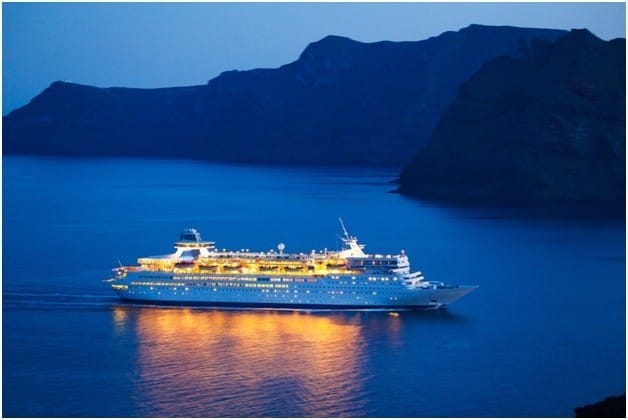
Has recent news about a cruise ship catching fire in the middle of the ocean or having to limp back to shore after a mechanical failure shocked you and completely changed your idea of a cruise? Good. It was about time vacationers knew the truth about the cruise industry, which is far from the idyllic image of families sipping cocktail drinks and having a blast on board. Although they remain one of the most popular vacation choices, cruises have their dirty secrets – and knowing the truth may help you greatly in deciding if a one-week voyage on a 100,000-ton steel behemoth stranded in the middle of the ocean is a responsible choice for your next family reunion.
For vacationers on a budget looking to visit multiple destinations at once, pamper themselves at luxurious spas, or serve some of the finest chef-crafted food in chandelier-lit dining rooms, taking a cruise would certainly be a memorable experience. Long deemed as one of the safest, most affordable, and exciting vacation experiences available, cruise lines attract over 20 million global passengers every year, generating nearly $40 billion in annual revenue for the US economy. Not only is the cruise line industry booming, it’s also growing at an incredible pace: 7.4% has been the average annual growth rate since 1980, and it is forecast to exhibit dynamic growth by 2025, when 36.4 million guests are expected to get onboard.
The ships themselves are not even floating hotels anymore – they have become entire cities. With their own restaurants, casinos, theaters, basketball courts, conference rooms, and spa resorts, luxurious cruise liners now have every amenity you could think of. Some of the most extravagant ones, such as Cunrad’s Queen Mary 2 or the Royal Caribbean’s Allure of the Seas, exceed 150,000 tons and cost an average of $1 billion to build.
But as the cruise line sector continues to expand, so do its problems. Engine room fires, power outages, virus outbreaks, and pirate attacks are some of the highly-publicized mishaps that have left a lot of tourists wondering if taking a cruise is still a good idea. The truth is, there is a grittier side to cruises that’s almost impossible to detect – given the assiduous efforts of cruise line representatives to hide it from the public. But now it’s time to look closer: here are 5 shocking truths about cruise ships that will make you think twice before booking your next trip.
1. Emergency Systems Are Set Up for a Reason
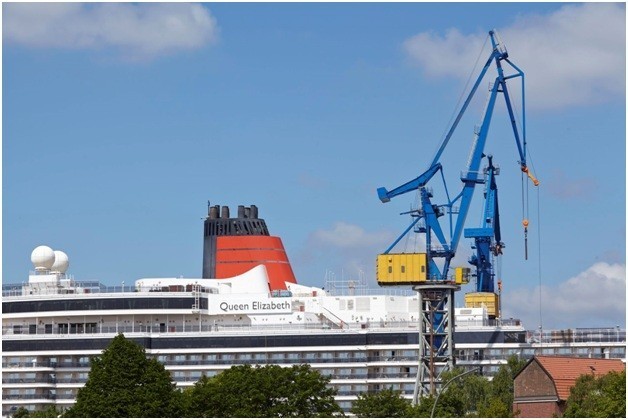
If cruise liners are considered so safe and comfortable, why do most ships come equipped with a morgue that can accommodate 1-3 dead bodies? Why is Carnival spending upwards of $300 million on an enhancement program of emergency responses, if the chances of mishaps are indeed so slim? Cruise ships are typically regarded as “the safest mode of transportation,” but according to experts, this conclusion is based on a 1990 study that compared cruise ships with automobiles and airplanes in terms of deaths and serious injuries caused.
Beyond that, there has been no initiative to document other critical issues, such as fires, collisions, pirate attacks, or norovirus outbreaks. In the first quarter of 2013 alone, there have been 21 serious incidents, and the number doesn’t include the issues that usually don’t make the news, such as those regarding passengers, staff, or environmental concerns. Despite the constant reassurances that all cruise ships are currently operating as safely as possible, there’s no denying the fact that emergency systems are set up for a reason.
The one that’s currently being implemented by Carnival Cruise Lines will reinforce key power loss prevention systems, install emergency generators on each vessel, and set up a back-up power system that will expand the availability of hotel services for passengers in case there’s a power outage. Additional investments will target fire prevention, detection, and suppression systems, upgrading the existing capabilities to the newest generation. There will also be formed a Safety & Reliability Review Board comprised of outside experts who will provide their input on issues such as marine and occupational safety, quality control, and reliability and maintenance.
2. Itineraries Can Change Mid-Voyage
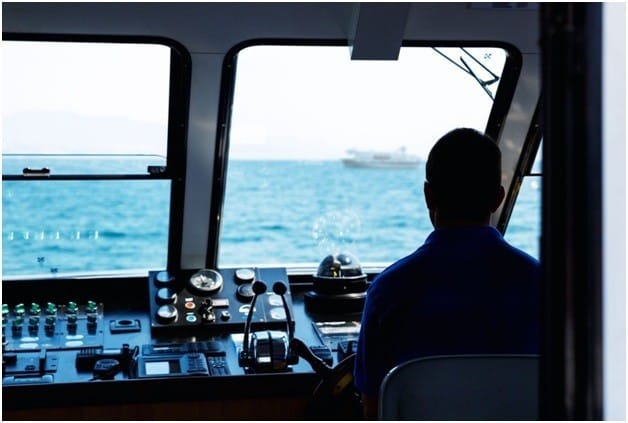
Imagine planning your excursion for months in advance and getting everyone excited, when suddenly, your enthusiasm takes a turn off course: the cruise line announces a change of itinerary.
It could happen before you get on board due to security issues, weather changes, hostilities, and civil unrest in planned stops. Port closings or emergency embarkations of guests and staff could also lead to cancellation of scheduled ports of call within days of departure. Not even after setting sail does a ship’s scheduled itinerary stop being subject to changes. It is not unheard of for a ship to deviate in any direction and for any purpose from the set course, as well as omit or change ports of call or arrival times.
Unfortunately, most travelers have no idea they are, in fact, agreeing to itinerary changes the minute they sign the cruise line’s ticket contract. Usually written in fine print, a provision stating that ships can deviate from the usual course for any reason whatsoever protects the cruise line company against every contingency. You would think that when a cruise changes course mid-voyage, it would at least provide additional compensation to people on board, but that’s rarely the case. Under their itinerary change policy, cruise liners are not liable for refunds or compensation for post-departure changes.
A recent case that made the news revealed two Lakeland families’ intention of suing the cruise after the ship that was supposed to head to Mexico went on a rescue mission and had to change the destination for Bahamas. According to the upset passengers, the new destination wasn’t family friendly and that the trip they paid for was more expensive than the one to the Bahamas. As a result of the cruise line’s decision of modifying a scheduled itinerary without notice, the families have lost money, their sense of security, and trust in the cruise line company.
3. Feeling Seasick? You Might Be Infected

Perhaps the first – and only – health problem that comes to mind with regard to cruise ships is seasickness. Despite the fact that all ships have stabilizers, passengers can still feel motion when the waters are rough – even on the usually calm Caribbean. But motion sickness is the least of your problems if you’re worrying about getting sick on board. Every year, hundreds of people embark with dreams of exotic atmosphere and food feasts galore, only to come home sickened by the Norovirus, E. coli, Legionnaire’s disease, food poisoning, respiratory diseases, and other accidents and injuries.
Anytime there is a large mass of people crammed in a closed or semi-closed setting, the likelihood of disease increases exponentially. And despite the considerable progress in the identification and management of travel-related health problems, illness on board hasn’t been a rare occurrence in the last few years. By far, the most common illness contracted by passengers or staff members on the board of a cruise ship is the Norovirus (also known as the stomach flu). The risk of infection is strongly associated with improper sanitary conditions and physical contact with an infected individual. Accompanied by vomiting, nausea, fever, and abdominal cramps, Norovirus kills approximately 800 people every year in the U.S. and sickens nearly 20 million.
Following several outbreaks of typhoid fever and shigellosis, the U.S. Centers for Disease Control and Prevention (CDC) established the Vessel Sanitation Program (VSP) in the early 1970s. For a ship that has a foreign itinerary and calls on a U.S. port to be allowed to operate, it has to go through regular and surprise inspections by VSP personnel, who look at the following:
• How water and food are stored, distributed, and protected against infection on board
• How deck pools and other standing water is being filtered and disinfected
• If the staff adheres to the strict guidelines of personal hygiene
• How clean is the ship in general (also looking for the presence of pests and rodents)
• If the training implemented by the cruise line company in environmental and public health practices is effective and meets its goals
For instance, a Carnival cruise ship that didn’t pass a CDC inspection had failed to protect salad bar foods with sneeze shields against airborne viruses, didn’t ensure proper lighting for cleaning areas involving food, and failed to ensure proper chlorination for the ship’s water park. Inspectors also found bugs near food and beverages and a leaking dried food waste compartment.
4. Cruise Mishaps, a Common Sight
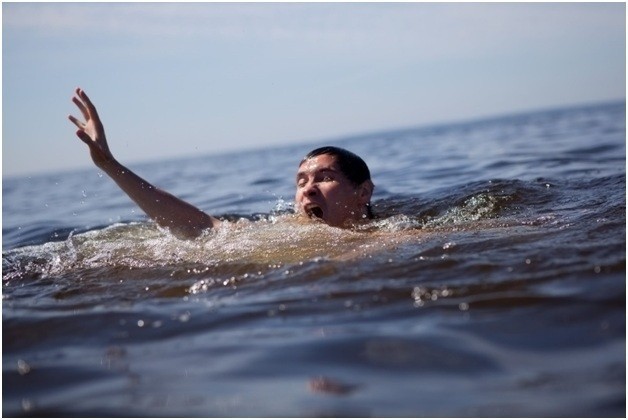
If the Carnival’s Triumph engine room fire or the Costa Concordia’s running aground are well-known to most of the public, there are many other unfortunate events at sea that go unpublicized and, hence, lost forever. You would think that, for a $40 billion industry, there would be some kind of regulatory agency that would centralize all the fires, collisions, sinking, and other accidents. In reality, cruise liners are only obligated to report problems they experience with the state they’re registered with, and – surprise! – they are rarely registered in the U.S. It’s a common practice among cruise companies to register their ships in countries such as Panama or Liberia, where there are far fewer environmental and human rights regulations. As a result, cruise liners are able to eschew environmental laws, get around paying taxes, and recruit workers for slave wages.
There is, however, enough data to conclude that cruise ships have always had such problems. Between 1990 and 2011, 79 ships caught fire and, if the average number of fires until 2006 was 3-4 per year, after 2006, it nearly doubled to 7-8 per year. Between 1972 and 2011, almost 100 ships have run aground and 16 had completely sunk. And when it’s not technical problems or natural hazards (coral reefs, icebergs, etc.) that cause such unfortunate event, there are, of course, pirate attacks, which have become a very serious concern in recent years. In 2009 alone, Somali pirates have successfully attacked 200 ships and earned over 30 million Euros in stolen goods and ransoms.
While groundings, collisions, and pirate attacks are all tragic events, there’s nothing scarier than the thought of people simply disappearing from a ship. In the last 14 years, there have been no fewer than 200 reports of passengers who didn’t claim their luggage and turned out to be missing. Some appeared to be suicides, while others were accidents caused by alcohol. For the largest part of disappearances, however, the details are still unknown.
5. Pristine Waters in Front, Waste Behind
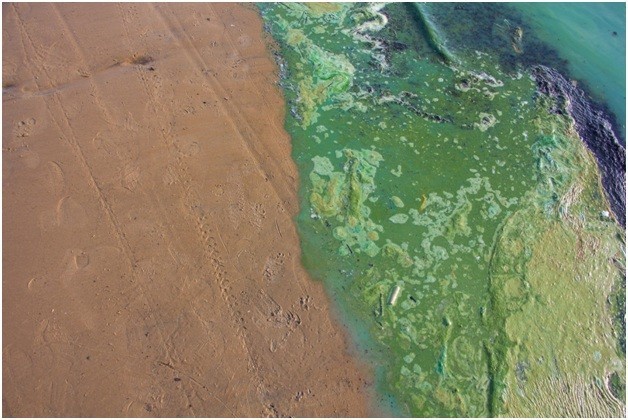
Have you ever wondered where the enormous amounts of raw sewage, discarded food and garbage, or waste water from showers and toilets generated by the nearly 400 “floating cities” go? Since they don’t evaporate, they are, of course, dumped into the ocean – oftentimes, in pristine coastal waters, posing an enormous threat to ocean ecosystems and the shore inhabitants.
According to the U.S. Environmental Protection Agency (EPA), an average 3,000-passenger ship produces 210,000 gallons of sewage and 1 million gallons of graywater per week. This is enough to fill 50 swimming pools with hazardous waste and dump it into the ocean. The fecal matter, bacteria, pathogens, and viruses can easily contaminate fish and sea life, posing a real threat to the wellbeing of humans and aquatic creatures. Every day, the average cruise ship generates:
• 7 tons of garbage and solid waste
• 15 gallons of toxic chemicals
• 37,000 gallons oily bilge water
• Hundreds of thousands of ballast water
As if that weren’t enough, cruise ships are also enormous pollution factories. Consider this: Cunard’s Queen Elizabeth II needs 100 gallons of fuel to move a single mile – consuming over 430 tons of fuel per day. That’s the equivalent of 12,000 automobiles per day. All into the air and water we all share.
In conclusion, cruises aren’t always the sugar-coated, luxurious escapes to exotic destinations we see in advertisements – they are polluting steel behemoths that are as dangerous for those on board as for the surrounding environment.
If you happen to fall ill or get injured on the board of a cruise ship as a result of the staff’s or the cruise line’s negligence, don’t despair thinking you’ll never be able to win a case a cruise line company. Although it may be an uphill battle, getting the compensation you deserve is not impossible, and by securing legal assistance from an experienced cruise ship accident lawyer, you have every chance to recover damages.
About the Author:
Andrew Winston is a partner at the personal injury law firm of The Law Office of Andrew Winston. He has been recognized for excellence in the representation of injured clients by admission to the Million Dollar Advocates Forum, is AV Rated by the Martindale-Hubbell Law Directory, and was recently voted by his peers as a Florida “SuperLawyer”—an honor reserved for the top 5% of lawyers in the state—and to Florida Trend’s “Legal Elite.”






